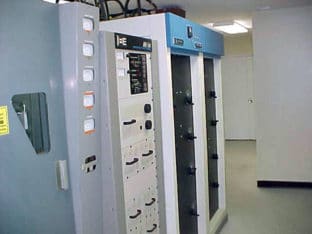Featured Media Information Bureau columnist Ken Benner has been in the radio industry long enough to remember vacuum tubes, and massive transformers supplying thousands of volts with efficiencies approaching 50%.
Back in the day, most licensees for smaller stations employed a full-time employee as a “Chief Engineer” who also served as an on-air “personality” — in addition to serving in the capacity of “account executive” or, in some cases even “manager.”
What prompted this column and look back at the “good ol’ days” of radio? The recent removal of the FCC requirement for stations to have a physical presence in the community assigned to each station license.
Here are Benner’s thoughts on the rule change.
Here’s what Benner writes:
Once, there was a time when the cost of vacuum tubes and transformers created a situation where the electric bill was the biggest expense for most radio stations.
Then, one day a very talented engineer at Bell Telephone Labs developed the transistor that changed everything. Transmitter efficiencies approached 95%, regular tube-testing and replacement became non-existent, and weekly preventative maintenance (PM) was reduced substantially by subscribing to the following phrase: “Keep it clean, keep it cool, keep the voltage spikes under control, and you will eliminate 95% of your PM time.”
This then led to the widespread development of Contract Engineers holding massive key-chains for the transmitter sites of dozens of stations. Doing mock inspections, I met several of these remarkable men and women who developed a profitable business with their pickup truck, toolbox, test equipment, fuses and most frequent items of failure.
One such contract engineer in the Southwest U.S. maintains over 5 dozen stations and still has time for community volunteerism. There are several “Father-Son” contract engineer firms operating with amazing efficiency, most of which operate on monthly fixed-fee maintenance contracts.
For some time, to save money, many stations are served by internet monitoring firms with which all operating parameters, including video of essential meter readings such as power out, VSWR, EAS compliance, tower site security, etc. are available to a traveling contract engineer and a central operation that is alerted to significant items of signal disruption, including tower light outage, audio quality, etc.
Minus the FCC’s previously required physical presence for communities of license (COL), the question arises: “How do we comply with the FCC Public File requirement for Quarterly Issues and Program Reports?”
This regulation requires stations to detail each station’s service to its COL by listing items aired of primary interest specific to the community. For example, city council meetings, proposed local tax increases, new books for the community library – – much the same as our little hometown newspapers.
Recall, from the past, for lack of this Public File compliance item, fines in the tens of thousands of dollars were assessed. Obviously, the Commission has taken a seriously dim view of such serious violations. Now that we have completed our 95% effort defining the problem, let us simply spend our 5% effort to address it.
In a previous column, I described a small satellite-audio-fed-24/7 station for which a girlfriend/boyfriend pair of high school Sophomores were given a cassette tape recorder and charged with producing a 90-Second interview with the local librarian, police chief, City Council member, dogcatcher, or other prominent news source.
Once this task was done, the kids would bicycle out to the transmitter site, unplug the station’s satellite feed and replace it with their 90-second audio straight from their cassette player. When finished, they reconnected the satellite feed and logged the broadcast in the station’s “Issues and Programs” Public File Folder.
This may sound ridiculous to most broadcasters, but the takeaway here is that, as radio’s leaders insist that radio is “local,” so must the engineering.
Out-of-market monitoring can only go so far — just as issues and programs that must reflect the community.
While the FCC rule changes certainly save money, they should not come at the cost of further eroding radio as a local media.
Ken Benner is an independent Alternative FCC Compliance Certification Inspector and a research analyst for the Coalition for Transparency, Clarification and Simplification of Regulations pertaining to American Broadcasting. Benner has more than 55 years of experience providing service to the broadcast industry.
The views expressed by Media Information Bureau columnists are those of the writer only and not of the editorial board of the Radio + Television Business Report or its parent, Streamline Publishing.





